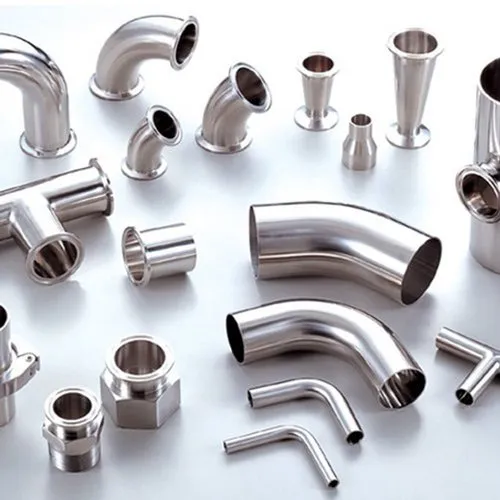Search This Blog
Kanak Metal & Alloys is a leading supplier of high-quality Pipe Fittings, Flanges, and Pipes in various varieties
Featured
- Get link
- X
- Other Apps
What Are Pipe Fittings? Uses Of Pipe Fittings.
What Are Pipe Fittings?
Pipe fittings are mechanical components that are used to connect, control, and direct the flow of fluids in a piping system. They come in a variety of shapes, sizes, and materials and are essential in any piping system.
Types of Pipe Fittings: There are several types of pipe fittings available in the market, including:
- Elbows: Used to change the direction of the pipe. Common angles for elbows are 45 and 90 degrees.
- Tees: Used to connect three pipes together at a right angle.
- Crosses: Similar to tees, but with an additional branch that connects to a fourth pipe.
- Reducers: Used to connect two pipes of different sizes together.
- Caps: Used to close off the end of a pipe.
- Couplings: Used to connect two pipes together.
- Adapters: Used to connect pipes of different materials or sizes.
>Pipe Fittings Supplier in Saudi Arabia
Materials:
Pipe fittings are made from a variety of materials to suit different applications. Common materials include:
- Stainless steel: Ideal for corrosive environments and high-temperature applications.
- Carbon steel: Durable and suitable for high-pressure applications.
- Brass: Resistant to corrosion and easy to install.
- PVC: Lightweight and affordable, suitable for low-pressure applications.
Installation:
Pipe fittings must be installed properly to ensure the system operates effectively and efficiently. Here are some installation tips:
- Make sure the pipe and fitting are the same size.
- Use proper tools to tighten the fittings.
- Apply thread sealant to prevent leaks.
- Follow manufacturer instructions for installation.
Maintenance:
Pipe fittings require regular maintenance to ensure they function properly. Here are some maintenance tips:
- Inspect fittings for signs of wear or damage.
- Replace worn or damaged fittings immediately.
- Check fittings for leaks and repair as needed.
- Clean fittings regularly to prevent corrosion.
In conclusion, pipe fittings are crucial components in any piping system. They come in a variety of shapes, sizes, and materials to suit different applications. Proper installation and maintenance are essential for ensuring the system operates efficiently and effectively.
Uses Of Pipe Fittings.
Pipe fittings are essential components used in the construction of various piping systems, from simple residential plumbing systems to complex industrial and commercial applications. Here are some of the most common uses of pipe fittings:
Connecting Pipes:
Pipe fittings are primarily used to connect two or more pipes together. They allow for the smooth transfer of fluids, gases, or solids from one point to another.
Changing Direction:
Elbows are fittings that allow the pipe to change direction at an angle. They are commonly used in plumbing systems to redirect the flow of water or gas.
Reducing or Enlarging Pipe Size:
Pipe reducers are used to connect pipes of different sizes together. This allows for the efficient transfer of fluids and gases from one point to another, even if the pipes are different sizes.
Controlling Flow:
Valves and regulators are pipe fittings that help control the flow of fluids and gases. They are often used in industrial and commercial applications to regulate the flow of fluids through pipelines.
Repair and Maintenance:
Pipe fittings are also used in repairing and maintaining piping systems. For example, damaged pipes can be cut and repaired using couplings, or elbows can be replaced if they become worn or damaged.
Adapting to Different Materials:
Pipe fittings are also used to connect pipes of different materials. For instance, copper pipes can be connected to steel pipes using adapters.
To know more about click on stainless steel pipe fittings
In conclusion, pipe fittings play an essential role in the construction and maintenance of piping systems. They allow for the efficient transfer of fluids, gases, and solids from one point to another, control flow, and adapt to different materials. Understanding the different types of fittings and their uses is essential for ensuring the safe and efficient operation of piping systems.
Product: Pipe Fittings Manufacturer & Supplier in Saudi Arabia
- Get link
- X
- Other Apps
Popular Posts
Pipe Fittings And Its 5 Types: Pipe Fittings Manufacturer in India
- Get link
- X
- Other Apps
What Are Forged Fittings? & What Are The Types Of Forged Fittings?
- Get link
- X
- Other Apps



Comments
Post a Comment